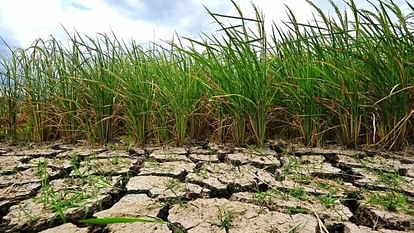
Drought like situation in Jharkhand
– Photo: Social Media
Expansion
Jharkhand seems to be moving towards drought. In fact, there has been 45 per cent less rainfall in the state, due to which crops could not be sown on 85 per cent cultivable land. The figures that have come out are frightening. As of July 21, Kharif crops have been sown only on 4.15 lakh hectares of 28.27 lakh hectares of land in Jharkhand, which is only 14.71 percent of the cultivable land.
CM Soren expressed concern
According to reports, in July of the year 2022, this figure was 20.40 percent. This is the season for sowing paddy. Paddy is sown on 18 lakh hectares of land in the state, but so far paddy has been sown only on 11.20 percent of the land. In Jharkhand, there has been a delay in the arrival of monsoon rains in the last few years, due to which the kharif crop cycle has started getting delayed. Chief Minister Hemant Soren has also expressed concern over this. During a program, the CM said that ‘due to climate change, farmers need to change their farming methods’.
Next seven to eight days are important
PK Singh, Research Director of Birsa Munda Agricultural University, says that the next seven to eight days are very important and if there is good rain in these days, the situation will improve somewhat. In 11 of the state’s 24 districts, less than five percent of land is under paddy cultivation. Paddy is cultivated on 50 percent of the land in Singhbhum district alone. Many farmers had prepared paddy nurseries but could not sow due to less rainfall.
Chandan Kumar, director of agriculture department, says that not only paddy but other crops are also decreasing. Maize sowing is only 32 per cent this year as against 50 per cent last year. Similarly, pulses are being sown in 14 percent, oilseeds in 20.05 percent area only. Farmers are being advised to sow low water-intensive crops like millets to deal with possible drought.